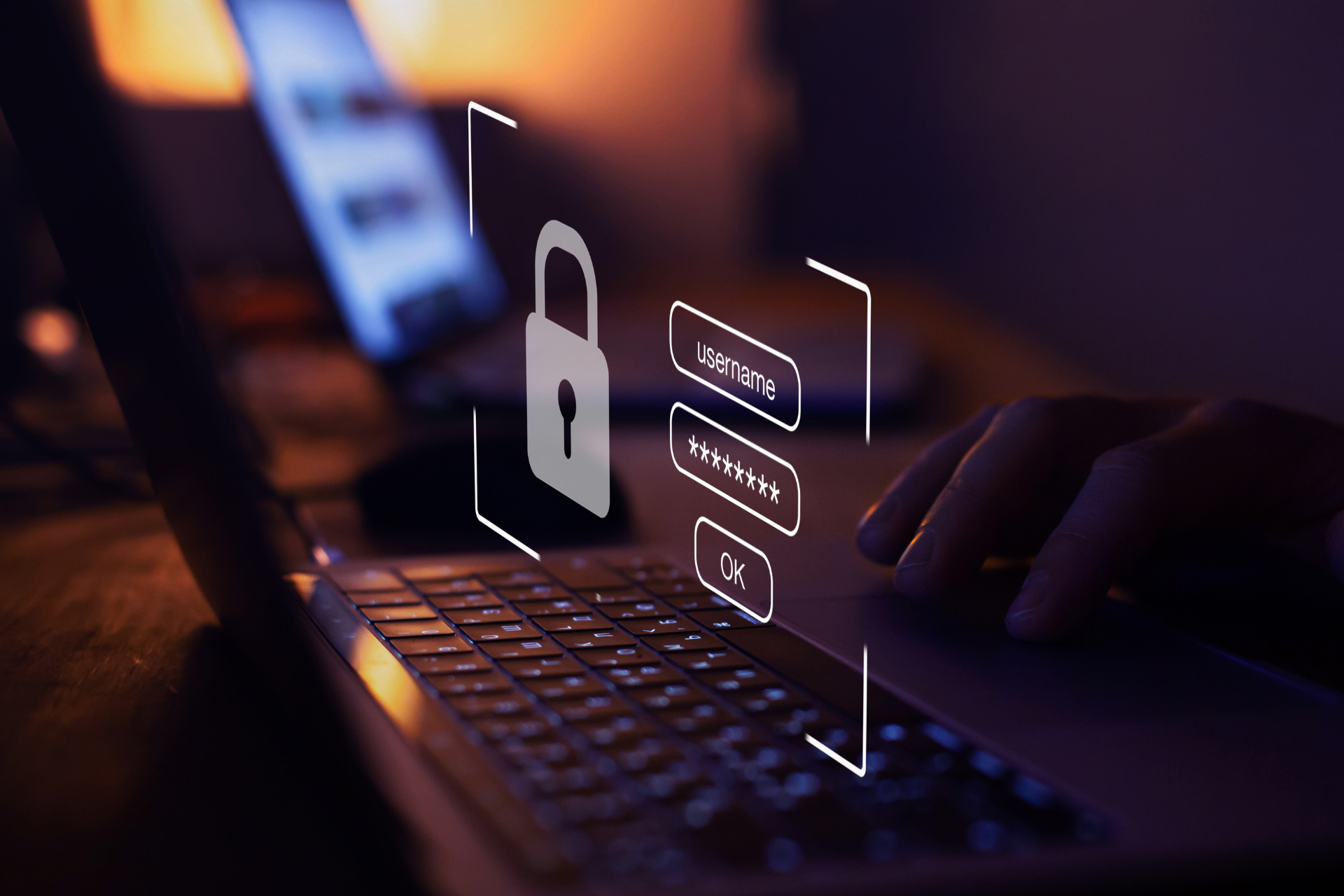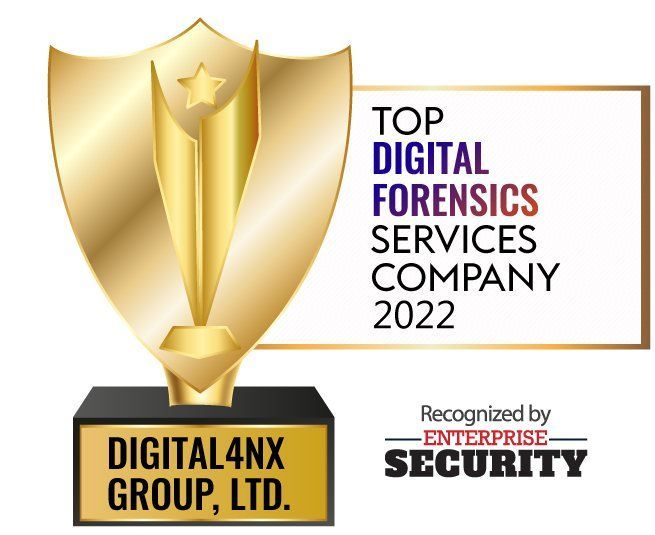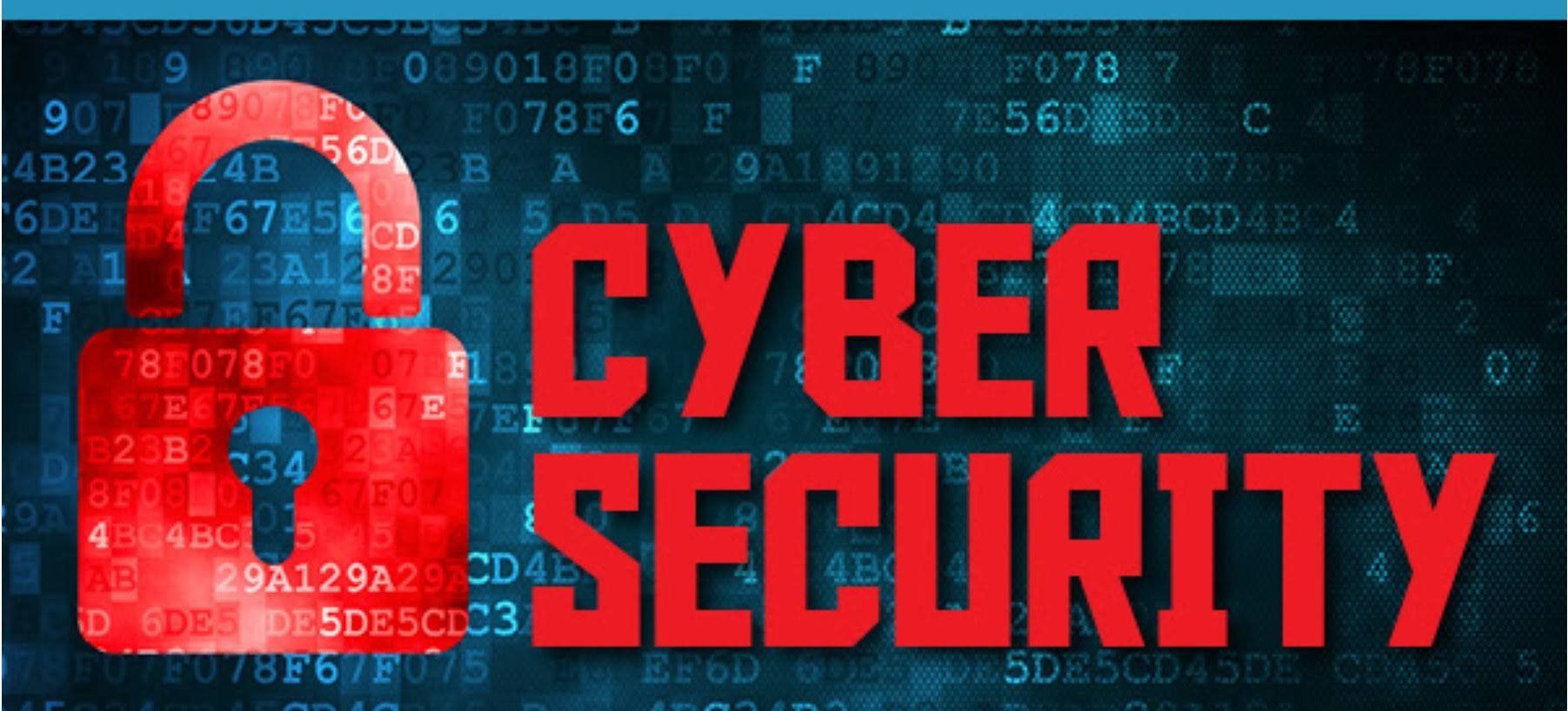Lawyers’ Guide to Investigating Employee Misconduct
Employee misconduct presents significant risks to organizations, impacting both technical operations and legal standing. For attorneys representing employers in employee misconduct legal matters, understanding these risks and the methods to mitigate them is crucial. This article delves into the various forms of misconduct, the technical and legal implications, and the strategies lawyers can employ to protect their clients. By examining both the technical aspects from a computer forensics perspective and the legal ramifications, we aim to provide a comprehensive guide to navigating these complex issues effectively.

Employee misconduct can take many forms, from minor infractions to severe breaches of trust. Common types include theft and fraud, harassment and discrimination, substance abuse, violations of company policy, and cyber misconduct. Theft and fraud might involve misappropriating company assets, including money, intellectual property, or confidential information. Harassment and discrimination create hostile work environments, while substance abuse impairs job performance and endangers others. Violations of company policy can range from disregarding IT usage rules to breaching health and safety regulations. Cyber misconduct, a growing concern, includes unauthorized access to company systems, data breaches, and cyber-attacks.
Investigating employee misconduct, particularly in cases involving digital evidence, requires a methodical and meticulous approach where digital forensics plays a crucial role. The process of investigating misconduct involves several stages, each critical to ensuring that the evidence collected is both comprehensive and legally admissible.
Identification of Evidence
The first step in any investigation is to identify the scope of the misconduct and the potential sources of evidence. Digital evidence can be scattered across various platforms and devices, making this step particularly challenging. Common sources of digital evidence include:
- Emails: Email communications can reveal incriminating details such as unauthorized transfers of confidential information, coordination of illicit activities, or harassment.
- Text Messages: SMS and instant messaging apps like WhatsApp or Slack often contain informal conversations where misconduct might be discussed more openly.
- Internet Browsing Activity: Logs of internet activity can show visits to inappropriate websites, evidence of time theft, or attempts to access unauthorized data.
- Digital Devices: Computers, smartphones, and tablets used by the employee can store vast amounts of data relevant to the investigation.
- Cloud Storage: Services like Google Drive, Dropbox, and OneDrive might hold documents or files that are pertinent to the case.
- Network Logs: Network traffic logs can provide evidence of unauthorized access or data exfiltration.
Preservation of Evidence
Once potential sources of evidence are identified, the next step is to preserve this evidence in its original state to maintain its integrity. This is typically achieved through forensic imaging, which involves creating exact replicas of digital devices’ storage media. The importance of preserving the original data cannot be overstated, as any alteration can compromise the evidence’s admissibility in legal proceedings. Forensic imaging tools such as EnCase or FTK Imager are commonly used to create these replicas. These tools ensure that the data is copied bit-by-bit, maintaining the exact state of the original data, including deleted files and metadata.
Collection of Evidence
Collecting evidence involves gathering data from the identified sources while ensuring a clear chain of custody is maintained. The chain of custody is a documented history of who has handled the evidence, starting from its initial collection to its presentation in court. This documentation is crucial to demonstrate that the evidence has not been tampered with. During the collection phase, forensic investigators may extract the following.
- Emails: Extracting emails involves accessing the company’s email servers or individual email accounts and downloading relevant emails. This process can include searching for specific keywords, dates, or correspondents.
- Text Messages: Text messages are extracted using mobile forensic tools such as Cellebrite or Oxygen Forensic Suite, which can recover messages from both the device’s memory and SIM card.
- Internet Browsing History: Browsing history is collected from web browsers’ history logs, cookies, and cache files. Investigators may also analyze DNS logs and proxy server logs to reconstruct internet activity.
- Digital Devices: Forensic software is used to analyze hard drives, SSDs, and other storage media. This can reveal files, documents, and logs that indicate misconduct.
- Cloud Storage: Accessing cloud storage may require legal processes to obtain data from third-party providers. Investigators will look for shared documents, collaboration logs, and file access history.
- Network Logs: Network administrators can provide logs that show access patterns, file transfers, and potential unauthorized access attempts.
Analysis of Evidence

Analyzing the collected data involves scrutinizing the evidence to uncover signs of misconduct. This stage can be the most complex, as it requires sifting through large volumes of data to find relevant information. Key techniques include:
- Keyword Searches: Using specialized software to search for specific terms or phrases that relate to the misconduct.
- Metadata Analysis: Examining metadata attached to files and emails to determine authorship, creation dates, modification dates, and access history.
- Timeline Reconstruction: Building a timeline of events to understand the sequence of actions taken by the employee. This can include login times, file access times, and communication timestamps.
- Behavioral Analysis: Looking for patterns in the data that suggest misconduct, such as repeated access to confidential files outside of work hours or unusual communication patterns.
- Recovery of Deleted Files: Using forensic tools to recover files that have been deleted but not yet overwritten. This can provide critical evidence that the employee tried to conceal their actions.
Reporting and Documentation
The final stage of the investigation involves compiling the findings into a comprehensive report. This report should detail the steps taken during the investigation, the evidence found, and the conclusions drawn. It must be clear, concise, and free of technical jargon to be easily understood by legal professionals and other stakeholders. The report typically includes:
- Executive Summary: An overview of the investigation’s findings and key conclusions.
- Methodology: A detailed description of the procedures and tools used during the investigation.
- Findings: A presentation of the evidence collected, including screenshots, logs, and recovered files.
- Analysis: An interpretation of the evidence, explaining how it supports the findings of misconduct.
- Conclusion: A summary of the investigation’s outcome and recommendations for further action.
Key Technical Considerations
Several critical technical considerations must be addressed throughout the investigation to ensure the evidence’s integrity and admissibility:
- Chain of Custody: Maintaining a documented history of evidence handling to ensure it remains untampered and admissible in court.
- Data Integrity: Using forensic tools that ensure data is not altered during the investigation, preserving the original state of the evidence.
- Authentication: Verifying the authenticity of digital evidence to prove that it has not been manipulated.
- Confidentiality: Protecting sensitive information during the investigation to comply with data privacy laws and organizational policies.
Investigating employee misconduct using digital forensics requires a thorough understanding of both technical and legal principles. By following a methodical approach to identify, preserve, collect, analyze, and report on digital evidence, attorneys can build a strong case to support their clients in legal proceedings. Understanding these technical aspects is essential for lawyers to effectively represent their clients and mitigate the risks associated with employee misconduct.
Legal Implications of Employee Misconduct
Employee misconduct can have profound legal implications for organizations, affecting everything from internal policies to compliance with federal and state laws. While most attorneys representing employers have a foundational understanding of employment law, delving deeper into the nuances and complexities of these legal implications can provide critical insights for effectively managing these situations.
One of the primary legal challenges in cases of employee misconduct is wrongful termination. Even in at-will employment states, where employers can terminate employees for any reason not prohibited by law, wrongful termination claims can arise if the dismissal violates public policy, breaches an implied contract, or infringes on statutory protections. To mitigate risks, employers must ensure that terminations are backed by clear, documented evidence of misconduct and are consistent with the company’s disciplinary policies. Collecting and preserving comprehensive evidence of misconduct is essential. This includes emails, performance records, witness statements, and any relevant digital evidence. Such documentation can serve as a robust defense in wrongful termination claims. Moreover, employers must apply disciplinary policies consistently across all employees to avoid claims of bias or discrimination. Inconsistent enforcement can lead to allegations that the termination was pretextual or discriminatory.
Discrimination claims can arise if an employee alleges that their termination or discipline was due to their race, gender, age, disability, or other protected characteristics rather than misconduct. Retaliation claims can also occur if the employee believes they were disciplined for engaging in protected activities, such as reporting harassment or participating in a workplace investigation. Employers should ensure that misconduct investigations and subsequent disciplinary actions are free from discriminatory practices. This involves providing training to managers and HR personnel on recognizing and preventing bias. Retaliation claims can be mitigated by maintaining transparency and fairness in the investigation process. Employers should document all steps taken during the investigation and ensure that disciplinary actions are based solely on evidence of misconduct. Failure to address harassment or maintain a safe workplace can result in significant legal liabilities. Employers have a legal obligation to investigate claims of harassment promptly and thoroughly. If misconduct investigations uncover evidence of harassment, employers must take immediate and appropriate action to address it. Employers must act quickly to investigate harassment claims to demonstrate that they take such allegations seriously. Delays can be perceived as negligence or indifference. Remedial actions must be effective in stopping the harassment and preventing its recurrence. This may involve disciplinary actions against the harasser, training for employees, or changes in workplace policies.
Data privacy laws, such as the General Data Protection Regulation (GDPR) in the EU or the California Consumer Privacy Act (CCPA) in the U.S., impose stringent requirements on how employers handle personal data during misconduct investigations. Non-compliance can lead to severe penalties and reputational damage. Employers should limit the collection of personal data to what is strictly necessary for the investigation. This principle of data minimization helps reduce the risk of privacy breaches. In jurisdictions where consent is required, employers must obtain explicit consent from employees before accessing personal data. This can be challenging in misconduct investigations, where obtaining consent might compromise the investigation. Ensuring the security of collected data is paramount. Employers must implement robust security measures to protect the data from unauthorized access or breaches. Employment contracts, collective bargaining agreements, and implied covenants of good faith and fair dealing can further complicate the legal landscape of employee misconduct. Employers must navigate these contractual obligations carefully to avoid breaches that could result in litigation. Specific terms in employment contracts may outline the procedures for handling misconduct and disciplinary actions. Employers must adhere to these terms to avoid breach of contract claims. Unionized workplaces may have collective bargaining agreements that provide additional protections for employees and outline specific procedures for addressing misconduct. Employers must comply with these agreements to prevent grievances and arbitration. Courts may recognize implied covenants of good faith and fair dealing, requiring employers to act fairly and in good faith in their dealings with employees. Arbitrary or capricious actions in handling misconduct can lead to claims of breach of these implied covenants.
Employees who report misconduct or illegal activities are often protected under whistleblower laws. These laws prevent employers from retaliating against employees who engage in protected whistleblowing activities. Legal challenges can arise if an employee claims that disciplinary action was retaliation for their whistleblowing. Whistleblower protections vary by jurisdiction but generally prohibit retaliation against employees who report violations of law or company policy. Employers must ensure that any disciplinary actions are based on documented evidence of misconduct and are not retaliatory. Maintaining transparency during the investigation and clearly documenting the rationale for any disciplinary actions can help defend against retaliation claims. Misconduct investigations can lead to litigation or regulatory scrutiny. Employers must be prepared to defend their actions in court or before regulatory agencies. This involves maintaining thorough documentation, ensuring compliance with relevant laws, and seeking legal counsel when necessary. Employers should anticipate potential litigation by meticulously documenting the investigation process, evidence collected, and disciplinary actions taken. This documentation can serve as a critical defense in court. Compliance with relevant laws and regulations, such as those governing employment practices, data privacy, and whistleblower protections, is essential to avoid fines, penalties, and reputational damage.
Lawyers representing employers in cases of employee misconduct must adopt strategies that address both the technical and legal complexities of these cases. This involves advising clients on updating and enforcing company policies, conducting thorough and unbiased investigations, and ensuring compliance with all relevant laws. One of the most effective strategies for mitigating legal risks is to ensure that the client’s company policies are up-to-date and comprehensive. This includes policies on IT usage, code of conduct, harassment, and disciplinary procedures. Regular reviews and updates to these policies help address new legal requirements and emerging risks. Regular training sessions for employees and management on company policies and legal requirements are essential. Training should cover recognizing and reporting misconduct, preventing harassment and discrimination, and understanding data privacy obligations. Well-informed employees are less likely to engage in misconduct, and well-trained managers are better equipped to handle allegations appropriately. A robust incident response plan is critical for effectively managing misconduct allegations. Such a plan should outline procedures for investigating misconduct, preserving evidence, and documenting the investigation process. It should also include protocols for communicating with stakeholders, including employees, legal counsel, and regulatory authorities.
Maintaining meticulous documentation throughout the investigation process is vital. This includes records of the chain of custody for evidence, detailed investigation reports, and documentation of disciplinary actions. Thorough documentation not only supports the integrity of the investigation but also serves as crucial evidence in legal proceedings. Providing ongoing legal counsel during misconduct investigations ensures that employers comply with employment laws and data protection regulations. Legal counsel can guide the investigation, help navigate complex legal issues, and advise on appropriate disciplinary actions. This support is essential for mitigating legal risks and defending against potential claims.
Strategies for Lawyers
Lawyers representing employers in cases of employee misconduct must adopt comprehensive and multifaceted strategies to address both the technical and legal complexities of these situations. Here are several detailed approaches that can be instrumental in effectively managing and mitigating risks associated with employee misconduct.
Policy Review and implementation
One of the most effective strategies for mitigating legal risks is to ensure that the client’s company policies are up-to-date and comprehensive. This includes policies on IT usage, code of conduct, harassment, and disciplinary procedures. Lawyers should work with their clients to regularly review and update these policies to reflect new legal requirements and emerging risks. This process involves a thorough audit of existing policies to identify gaps and inconsistencies. For example, IT usage policies should clearly define acceptable and unacceptable use of company resources, and disciplinary procedures should outline the steps for investigating and addressing misconduct. To implement these updated policies effectively, companies should engage in proactive communication with employees. This can be achieved through regular training sessions, employee handbooks, and intranet postings. Ensuring that all employees understand the policies and the consequences of violations is crucial for creating a compliant and respectful workplace culture.
Training and Education
Regular training sessions for employees and management on company policies and legal requirements are essential. Training should cover recognizing and reporting misconduct, preventing harassment and discrimination, and understanding data privacy obligations. Well-informed employees are less likely to engage in misconduct, and well-trained managers are better equipped to handle allegations appropriately. Lawyers should advise their clients to develop comprehensive training programs that are tailored to the specific needs of their organization. These programs should include interactive elements such as workshops, role-playing scenarios, and Q&A sessions to engage employees and reinforce key concepts. Additionally, training should be conducted regularly to keep employees informed of any changes in policies or legal requirements. For management and HR personnel, specialized training on conducting investigations, maintaining confidentiality, and documenting findings is essential. This training ensures that those responsible for handling misconduct allegations are equipped with the skills and knowledge necessary to conduct thorough and unbiased investigations.
Developing Robust Incident Response Plans
A robust incident response plan is critical for effectively managing misconduct allegations. Such a plan should outline procedures for investigating misconduct, preserving evidence, and documenting the investigation process. It should also include protocols for communicating with stakeholders, including employees, legal counsel, and regulatory authorities. Lawyers should work with their clients to develop and implement comprehensive incident response plans tailored to the organization’s specific needs. These plans should include clear guidelines for the following:
- Initial Response: Steps to take immediately upon receiving an allegation of misconduct, including notifying relevant personnel, securing evidence, and assessing the situation’s severity.
- Investigation Procedures: Detailed procedures for conducting a thorough investigation, including identifying and interviewing witnesses, collecting and preserving digital evidence, and maintaining a clear chain of custody.
- Documentation and Reporting: Guidelines for documenting the investigation process, findings, and any disciplinary actions taken. This documentation should be thorough and clear to support the investigation’s integrity and provide a robust defense in potential legal proceedings.
- Communication Protocols: Procedures for communicating with employees, legal counsel, regulatory authorities, and other stakeholders throughout the investigation. Clear and transparent communication helps build trust and ensures that all parties are informed of the investigation’s progress and outcomes.
- Remedial Actions: Guidelines for determining appropriate disciplinary actions based on the investigation’s findings and ensuring these actions are implemented consistently and fairly.
Documentation and Reporting
Maintaining meticulous documentation throughout the investigation process is vital. This includes records of the chain of custody for evidence, detailed investigation reports, and documentation of disciplinary actions. Thorough documentation not only supports the integrity of the investigation but also serves as crucial evidence in legal proceedings.
Lawyers should emphasize the importance of comprehensive and accurate documentation to their clients. This involves training HR personnel and managers on proper documentation practices and ensuring that all steps taken during the investigation are recorded in detail. Key elements of effective documentation include:
- Chain of Custody: Maintaining a clear and documented history of evidence handling to ensure its integrity and admissibility in legal proceedings.
- Investigation Reports: Detailed reports that outline the investigation process, evidence collected, findings, and conclusions. These reports should be free of technical jargon and written in a clear, concise manner.
- Disciplinary Actions: Documentation of any disciplinary actions taken, including the rationale for these actions and any follow-up measures to prevent recurrence.
Effective documentation practices help protect the organization from legal challenges and demonstrate a commitment to transparency and fairness.
Ongoing Legal Counsel
Providing ongoing legal counsel during misconduct investigations ensures that employers comply with employment laws and data protection regulations. Legal counsel can guide the investigation, help navigate complex legal issues, and advise on appropriate disciplinary actions. This support is essential for mitigating legal risks and defending against potential claims. Lawyers should be actively involved in the entire investigation process, from the initial response to the final resolution. This involvement includes reviewing and advising on investigation plans, ensuring compliance with legal requirements, and providing strategic guidance on handling sensitive issues such as potential discrimination or retaliation claims. Additionally, legal counsel can help employers develop proactive strategies for preventing misconduct and reducing legal risks. This includes advising on policy development, training programs, and risk management practices. By working closely with their clients, lawyers can help create a culture of compliance and accountability within the organization.
Case Studies
Understanding the practical application of strategies to handle employee misconduct can be greatly enhanced through detailed case studies. These real-world examples illustrate how the combination of digital forensics and legal strategies can effectively address various types of misconduct. Here, we examine three detailed case studies that highlight different facets of employee misconduct: intellectual property theft, harassment, and data breaches.
In the first case, a mid-sized tech company discovered that a software developer had stolen proprietary code and shared it with a competitor. The issue came to light when a competitor released a product that closely mirrored the company’s proprietary software. Suspicions arose, and an internal review pointed towards a developer who had recently resigned. The company’s IT department flagged unusual activity on the developer’s workstation, including large file transfers to an external USB drive. A digital forensics team was brought in to conduct a thorough investigation. They began by creating a forensic image of the developer’s workstation to preserve the state of the data. The analysis revealed extensive email communications between the developer and the competitor, along with logs showing multiple file transfers of proprietary code to an external drive. The forensic team also recovered deleted files and emails, which contained further evidence of the misconduct. Armed with this evidence, the company pursued legal action against both the former employee and the competitor. The evidence collected during the digital forensics investigation was pivotal in demonstrating that the developer had violated his employment agreement and confidentiality clauses. The company filed a lawsuit alleging theft of trade secrets and sought an injunction to prevent the competitor from using the stolen code. The comprehensive forensic report supported the company’s claims and played a critical role in the court proceedings, leading to a favorable settlement.
In another instance, an employee at a manufacturing company filed a complaint alleging sexual harassment by a supervisor. The complaint was filed with the HR department, which immediately launched an investigation. The company had a clear anti-harassment policy in place, and the HR team followed established procedures for handling such complaints. The initial steps included separating the complainant and the accused to prevent further incidents and protect the complainant from retaliation. The company engaged digital forensics experts to examine electronic communications between the supervisor and the complainant. The forensic analysis involved reviewing emails, text messages, and chat logs from company-provided devices. The investigation uncovered a pattern of inappropriate and harassing messages sent by the supervisor. Additionally, the forensic team retrieved deleted messages that corroborated the complainant’s allegations. Based on the evidence collected, the company terminated the supervisor’s employment. The thorough documentation of the investigation process and findings was crucial in defending against any potential wrongful termination claims. The company also implemented additional training sessions on workplace harassment and updated its policies to prevent future incidents. The complainant was reassured by the company’s prompt and decisive actions, which also helped mitigate any potential legal liabilities.
A financial services firm experienced a data breach, which internal investigations revealed was caused by an employee intentionally leaking customer data. The data breach was detected when customers reported unauthorized transactions and access to their accounts. The firm’s IT security team identified unusual activity originating from an internal IP address. An immediate response involved isolating the suspected source to prevent further data leakage and notifying the legal and compliance departments. Digital forensics experts were brought in to conduct a detailed investigation. They analyzed network logs, employee access records, and the specific workstation involved. The forensic analysis revealed that the employee had used administrative privileges to access sensitive customer information, which was then transferred to an external server. Further investigation uncovered communications with external parties, suggesting that the data was sold or shared. The firm faced multiple legal challenges, including notifying affected customers and regulatory authorities, as required by data privacy laws such as the GDPR and CCPA. The detailed forensic report helped the firm comply with legal obligations by providing a clear timeline of the breach and the steps taken to mitigate it. The employee was terminated, and the firm pursued legal action for breach of fiduciary duty and violation of data protection regulations. Additionally, the firm enhanced its security protocols and conducted comprehensive training for all employees on data protection and cybersecurity practices.
These case studies illustrate the complex and multifaceted nature of handling employee misconduct. They highlight the importance of a coordinated approach that combines digital forensics and legal strategies to uncover, address, and mitigate misconduct effectively. By understanding these real-world applications, lawyers can better prepare to represent their clients and protect their interests in similar situations. Ensuring thorough investigations, maintaining robust documentation, and adhering to legal requirements are critical components in successfully managing cases of employee misconduct. For more detailed information on handling employee misconduct and mitigating associated legal risks, feel free to reach out to our team of experts.
Conclusion
Employee misconduct poses significant and multifaceted risks to organizations, impacting not only their internal operations but also their legal standing and reputation. The complexities involved in addressing these issues require a well-coordinated approach that integrates digital forensics with robust legal strategies. For lawyers representing employers, it is essential to ensure that their clients have up-to-date and comprehensive policies that address the various types of misconduct. This includes clear IT usage guidelines, anti-harassment policies, and well-defined disciplinary procedures. Regular reviews and updates of these policies are necessary to keep pace with evolving legal standards and emerging risks. Training and education play a pivotal role in preventing misconduct. Well-informed employees are less likely to engage in inappropriate behavior, and well-trained managers are better equipped to handle allegations effectively. Training should be interactive and ongoing, ensuring that all personnel are aware of their responsibilities and the consequences of misconduct.
Developing and implementing robust incident response plans is another critical strategy. These plans should outline procedures for identifying, preserving, and analyzing evidence, maintaining the chain of custody, and documenting the investigation process. Clear communication protocols and guidelines for remedial actions are essential to ensure a transparent and fair process. The role of digital forensics cannot be overstated. As demonstrated in the case studies, digital evidence often forms the cornerstone of misconduct investigations. Properly collecting, preserving, and analyzing digital evidence ensures its integrity and admissibility in legal proceedings. Forensic experts can uncover crucial information, such as email communications, text messages, internet browsing activity, and file transfer logs, that might otherwise go unnoticed. Legal counsel must be actively involved throughout the investigation process, providing ongoing guidance to ensure compliance with employment laws and data protection regulations. This includes advising on the legal implications of evidence collection and ensuring that disciplinary actions are justified and legally defensible. Lawyers should also help their clients navigate complex issues such as discrimination, retaliation claims, and whistleblower protections. Furthermore, the aftermath of misconduct investigations often requires additional measures to strengthen organizational policies and practices. This may involve enhancing security protocols, conducting comprehensive employee training on data protection and cybersecurity, and implementing measures to prevent future incidents. By taking a proactive approach, organizations can mitigate risks and foster a culture of accountability and compliance.
In conclusion, effectively managing employee misconduct requires a comprehensive and integrated approach that combines technical expertise with legal acumen. By understanding the legal implications of misconduct, leveraging digital forensics, and adhering to best practices in employment law, lawyers can help their clients navigate these challenges and mitigate legal risks. Ensuring that companies have robust policies, training programs, and incident response plans in place is crucial for maintaining a safe and compliant workplace. For more detailed information on handling employee misconduct and mitigating associated legal risks, feel free to reach out to our team of experts. Together, we can work towards creating a more secure and ethically responsible organizational environment










